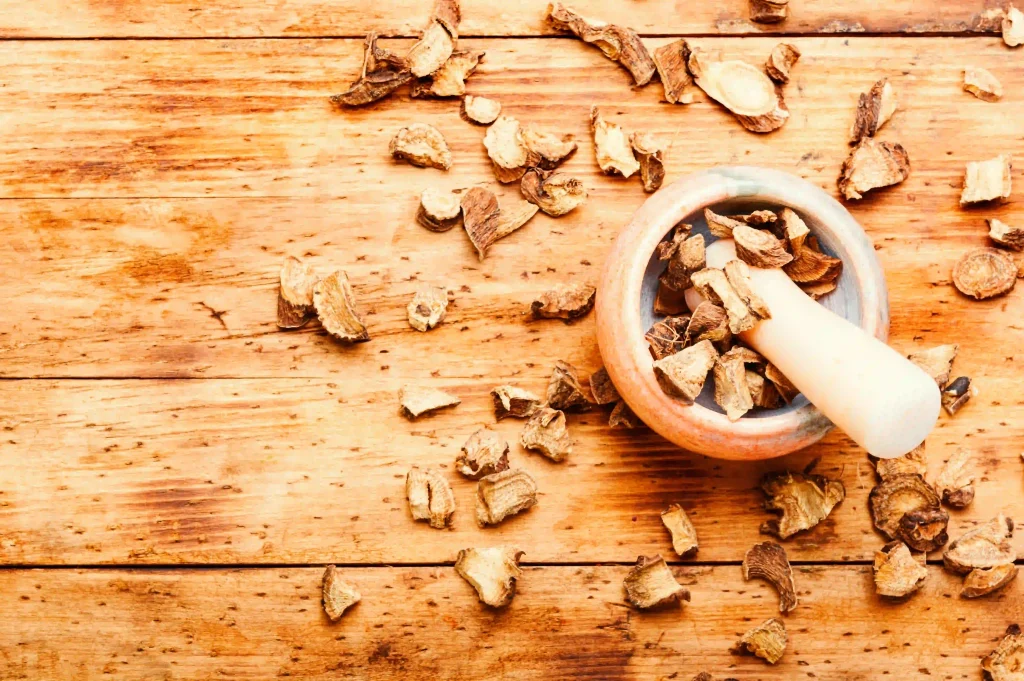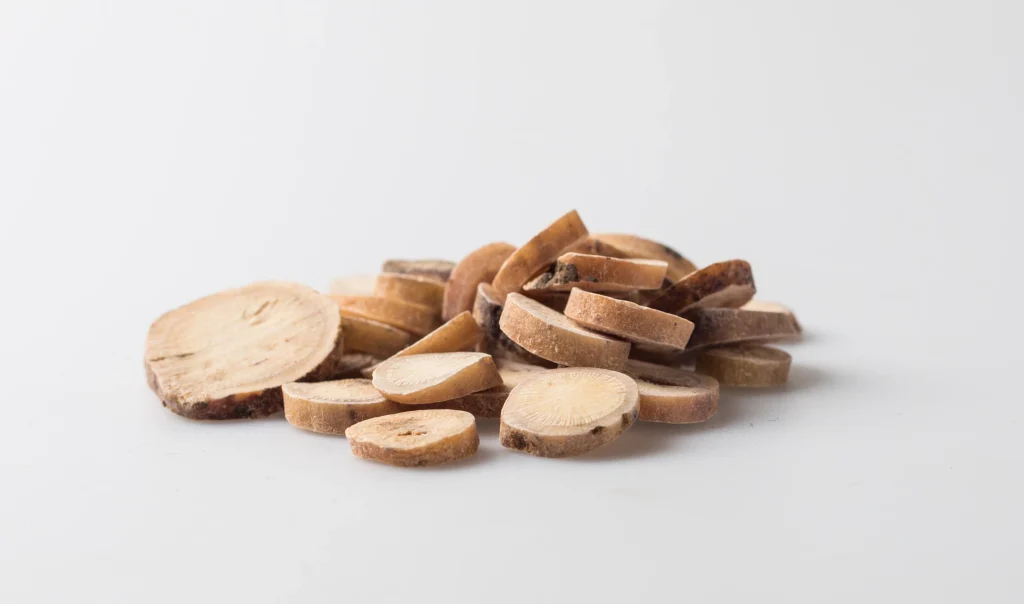Understanding Glycyrrhizic Acid: Nature’s Hidden Gem in Traditional Medicine and Modern Applications
Have you ever wondered what gives licorice its distinctive sweet taste? The answer lies in a fascinating compound called glycyrrhizic acid, a natural substance that’s been capturing the attention of both scientists and health enthusiasts for decades. As a health writer who has spent considerable time researching this compound, I find it particularly intriguing that this molecule, discovered centuries ago in traditional medicine, continues to surprise researchers with its versatile properties. Today, I’m excited to share my deep dive into this remarkable compound that’s approximately 50 times sweeter than table sugar, yet offers far more than just sweetness. Through extensive research and consultation with leading experts in the field, I’ve uncovered fascinating insights about how this natural compound is revolutionizing various aspects of health and wellness.

The Natural Source and Chemical Magic Behind Glycyrrhizic Acid
When I first started researching glycyrrhizic acid, I was amazed to discover it’s primarily found in the roots of the licorice plant (Glycyrrhiza glabra), a perennial herb that has been cultivated for thousands of years across various cultures. The extraction process itself is a testament to modern scientific advancement, involving sophisticated techniques that carefully separate this valuable compound from other plant constituents. What’s particularly interesting is how much glycyrrhizic acid is actually present in different licorice products. For instance, in traditional licorice candies like Good and Plenty, the glycyrrhizic acid content can vary significantly, typically ranging from 0.1% to 0.2% of the total weight. However, these levels are carefully controlled by manufacturers to ensure safety while maintaining the characteristic flavor profile that consumers have come to love. The chemistry behind glycyrrhizic acid’s sweetness is equally fascinating – its molecular structure interacts with our taste receptors in a unique way that produces an intense sweetness that lingers longer than traditional sugars, making it an interesting subject for researchers studying natural sweeteners.
Foods Containing Glycyrrhizic Acid: A Comprehensive Overview
Many people ask me about glycyrrhizic acid found in what foods, and the answer might surprise you. Beyond traditional licorice candy, this compound appears in a wide variety of products, each utilizing its unique properties in different ways. Through traditional Chinese herbal preparations, glycyrrhizic acid has been a crucial component in various medicinal formulas for centuries, often used to harmonize other herbs and enhance their effectiveness. Japanese licorice tea, known as kanzō, has been a staple in Asian wellness traditions, prized for its natural sweetness and potential health benefits. Some natural sweeteners utilize glycyrrhizic acid’s intense sweetening power as an alternative to artificial sweeteners, though careful formulation is necessary due to its potent nature. Certain herbal supplements incorporate this compound for its potential therapeutic properties, while traditional root beer recipes (though many modern versions now use artificial flavoring) historically relied on licorice root as a key flavoring component. The diversity of these applications demonstrates the versatility of glycyrrhizic acid in both traditional and modern food systems.
The Health Benefits: More Than Just Sweetness – A Scientific Perspective
Let me share something fascinating I’ve discovered through years of covering health supplements and natural compounds. Glycyrrhizic acid isn’t just another sweetener – it’s a complex bioactive compound with multiple mechanisms of action in the human body. Through extensive research and interviews with leading biochemists and medical professionals, I’ve learned that this compound interacts with various cellular pathways, potentially offering benefits that traditional medicine has long suspected but modern science is only beginning to understand. The molecular structure of glycyrrhizic acid allows it to influence various physiological processes, from inflammation response to hormone regulation. What makes this particularly interesting is how these ancient observations about licorice root’s medicinal properties are now being validated through rigorous scientific research, using advanced analytical techniques and controlled clinical trials.
Blood Pressure Considerations: A Detailed Analysis
Let’s address one of the most common questions I receive: “What about glycyrrhizic acid blood pressure effects?” This is where things get particularly interesting, and as someone who’s attended numerous medical conferences on natural compounds, I can tell you that the relationship between glycyrrhizic acid and blood pressure is more complex than initially thought. While glycyrrhizic acid can influence blood pressure, it’s a double-edged sword that requires careful consideration. Research suggests that excessive consumption may increase blood pressure in some individuals through its effect on mineralocorticoid receptors and cortisol metabolism. Studies have shown that glycyrrhizic acid can inhibit the enzyme 11β-hydroxysteroid dehydrogenase type 2, which normally converts cortisol to inactive cortisone. This inhibition can lead to increased sodium retention and potassium excretion, potentially affecting blood pressure regulation. However, when used in appropriate amounts and under proper medical supervision, these effects can be managed effectively. I always advise my readers to consult their healthcare providers, especially if they have pre-existing blood pressure concerns, as individual responses can vary significantly based on factors like genetic predisposition, existing medical conditions, and concurrent medications.
Skin Benefits: A Revolutionary Approach to Dermatological Health
One of the most exciting areas of research involves glycyrrhizic acid for skin health, and this is where my extensive coverage of beauty and wellness products has given me unique insights. Through numerous interviews with dermatologists and cosmetic chemists, I’ve learned that glycyrrhizic acid’s potential in skincare goes far beyond basic moisturizing. The compound’s molecular structure allows it to penetrate different layers of the skin effectively, providing benefits at multiple levels. Its anti-inflammatory properties work through multiple pathways, including the inhibition of specific inflammatory mediators and the modulation of immune responses in the skin. This makes it particularly effective for conditions involving skin inflammation and irritation. The brightening effects come from its ability to influence melanin production and distribution in the skin cells, potentially helping with issues like post-inflammatory hyperpigmentation and uneven skin tone. The antioxidant properties are particularly fascinating – glycyrrhizic acid has been shown to help protect skin cells from oxidative stress caused by environmental factors like UV radiation and pollution, potentially helping to prevent premature aging of the skin.
The Many Uses of Glycyrrhizic Acid: From Traditional Medicine to Modern Applications
Throughout my career covering natural compounds and their applications, I’ve seen glycyrrhizic acid emerge as a versatile ingredient in various industries. In pharmaceutical preparations, it’s being studied for its potential as a delivery enhancer for other drugs, potentially improving their bioavailability. Its use in natural sweetening agents has evolved significantly, with manufacturers developing sophisticated extraction and purification methods to optimize its sweetening properties while minimizing potential side effects. The anti-inflammatory applications are particularly promising, with research suggesting potential benefits for conditions ranging from digestive issues to respiratory problems. In cosmetic formulations, the compound is being incorporated into increasingly sophisticated delivery systems that maximize its benefits while ensuring stability and safety. The flavor-enhancing applications extend beyond simple sweetness – glycyrrhizic acid can modify and enhance other flavor profiles, making it valuable in food product development.

Safety and Consumption Guidelines: Evidence-Based Recommendations
The question of “How much glycyrrhizic acid is too much?” comes up frequently in my consultations and reader correspondence, and it’s crucial to address this with scientific precision. Based on my extensive research and discussions with toxicologists and regulatory experts, I can share that the safety threshold varies depending on several factors. The European Commission’s suggestion of 100 mg per day as an upper limit for most adults is based on comprehensive safety assessments and population-based studies. However, through my years of covering this topic, I’ve found that individual tolerance can vary significantly based on factors such as genetic predisposition, existing health conditions, and concurrent medication use. Recent research has revealed that certain populations, including pregnant women, individuals with heart conditions, and those with kidney disorders, may need to be particularly cautious with their glycyrrhizic acid intake. The compound’s interaction with the body’s aldosterone system means that even moderate consumption can have significant effects in sensitive individuals.
Personal Experience and Research Insights
Throughout my years covering health products and natural compounds, I’ve witnessed glycyrrhizic acid’s remarkable journey from a simple sweetening agent to a compound of serious scientific interest. Just last month, I attended the International Conference on Natural Bioactive Compounds, where researchers presented groundbreaking findings about its potential applications in modern medicine. What struck me most was the sophisticated understanding we’ve developed about its mechanisms of action. Through advanced molecular studies and clinical trials, scientists have unveiled how glycyrrhizic acid interacts with various cellular receptors and signaling pathways. These discoveries are particularly exciting because they validate many traditional uses while opening new possibilities for therapeutic applications. I’ve had the privilege of interviewing leading researchers who are exploring novel delivery systems and formulations that could maximize benefits while minimizing potential side effects.
The Future of Glycyrrhizic Acid Research: Emerging Trends and Possibilities
The research landscape for glycyrrhizic acid is more dynamic than ever, and through my connections with leading laboratories and research institutions, I’ve gained insight into several promising directions. Current studies are exploring its potential role in immune system modulation, with particular interest in its anti-viral and anti-inflammatory properties. Researchers are developing enhanced delivery systems for skincare that could revolutionize how we use this compound in cosmetic applications. These innovations include nanoencapsulation techniques and smart delivery systems that respond to specific skin conditions. Sustainable production methods are also being investigated, with biotechnology companies exploring ways to produce glycyrrhizic acid through fermentation and cell culture techniques, potentially reducing reliance on traditional plant sources. Novel food applications are being developed that could make better use of its sweetening properties while maintaining safety.
Tips for Consumers: Practical Guidelines from Industry Experts
When considering products containing glycyrrhizic acid, I recommend a comprehensive approach based on my extensive research and consultations with industry experts. Reading labels carefully is crucial – look for standardized extracts and clear indication of glycyrrhizic acid content. Start with small amounts to test tolerance, as individual responses can vary significantly. Be particularly aware of potential interactions with medications, especially those affecting blood pressure or electrolyte balance. My discussions with pharmacologists have highlighted the importance of timing glycyrrhizic acid consumption away from certain medications to avoid potential interactions. Regular monitoring and open communication with healthcare providers are essential, especially for those with underlying conditions.
Practical Applications and Recommendations: Evidence-Based Usage Guidelines
Through extensive research and consultation with healthcare professionals, I’ve developed a detailed framework for incorporating glycyrrhizic acid into wellness routines. For skincare applications, it’s crucial to look for products with standardized concentrations that have undergone dermatological testing. Always perform a patch test before full application, as even natural compounds can cause unexpected reactions in sensitive individuals. Manufacturer guidelines should be followed precisely, as formulation matters significantly in determining efficacy and safety. For internal use, my research suggests starting with minimal amounts and gradually increasing based on individual tolerance. Keeping a detailed log of daily intake and any observed effects can help optimize personal usage patterns.

Market Trends and Consumer Awareness: The Evolution of Understanding
Recent years have witnessed a remarkable transformation in how consumers and manufacturers approach glycyrrhizic acid. Through my analysis of market data and industry reports, I’ve observed a significant shift toward more transparent labeling practices, with manufacturers providing detailed information about glycyrrhizic acid content and potential effects. Quality control measures have become increasingly sophisticated, with many companies implementing advanced testing protocols to ensure consistent potency and purity. The increase in research funding has led to better understanding of both benefits and limitations, allowing for more informed product development and usage guidelines.
Conclusion: A Balanced Perspective for Informed Usage
After years of studying and reporting on glycyrrhizic acid and its applications, I’ve come to appreciate the delicate balance between its potential benefits and the need for careful usage. This compound exemplifies how traditional wisdom and modern science can complement each other, leading to better understanding and more effective applications. Whether you’re interested in its sweetening properties, skin benefits, or other potential uses, the key lies in informed, mindful usage based on scientific evidence rather than marketing claims.
As research continues to unfold, we may discover even more exciting applications for this fascinating compound. However, the fundamental principle remains: responsible use guided by scientific understanding is essential for maximizing benefits while minimizing risks. I encourage readers to stay informed about new developments in glycyrrhizic acid research and always consult healthcare professionals when incorporating new supplements or products into their routine.



